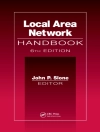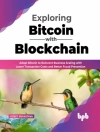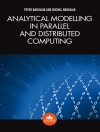This book presents a comprehensive reference of state-of-the-art e?orts and early results in the area of autonomic networking and communication. The essence of autonomic networking, and thus autonomic communication, is to enable the – tonomic component, device or system to govern the set of services and resources delivered at any given time while protecting context-sensitive business goals. An additionalchallengeistoprovideself-governanceinthefaceofchanginguserneeds, environmental conditions, and business objectives. In other words, an autonomic network understands relevant contextual data and changes to those data, and adapts the services and resources it provides in accordance with business-driven policies that protect user and business interests. Autonomic computing is often described as self-CHOP (self-con?guration, -healing, -optimisation, and -protection). Autonomic networking instead focuses on self-knowledge, which is the foundation to build self-governance.Note that self- CHOP functionality is still provided, but the emphasis of autonomic networking is on the foundation to realise self-CHOP, not in the di?erent self-* technologies and bene?ts.
Table of Content
Architectures and Models.- Technology Neutral Principles and Concepts for Autonomic Networking.- A Telco Approach to Autonomic Infrastructure Management.- Modelling Behaviour and Distribution for the Management of Next Generation Networks.- Middleware and Services.- Autonomic Communication with RASCAL Hybrid Connectivity Management.- Autonomic Resource Regulation in IP Military Networks: A Situatedness Based Knowledge Plane.- Autonomic Service Access Management for Next Generation Converged Networks.- Networks.- Cross-layer Optimisations for Autonomic Networks.- An Autonomic MPLS Diff Serv-TE Domain.- Game Theoretic Framework for Autonomic Spectrum Management in Heterogeneous Wireless Networks.












